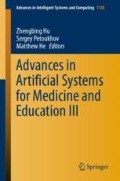Abstract
Convolutional polycategories introduced by the author find application in the general theory of systems, in the theory of artificial neural networks, in other areas of artificial intelligence. The report gives further applications of convolutional polycategories in algebraic biology and logical calculi, covering the classical and intuitionistic predicate calculus. Based on the formalism of convolutional polycategories, a new categorical definition of information is given, reflecting its semantic component. This definition finds application in algebraic biology with a basic code example of DNA and RNA molecules in a cell. A polycategorical model is given for the method of typical quantifiers used in AI and stronger than the Robinson method and the inverse Maslov method. The model reveals the categorical basis of calculus and is used to study the properties of the calculus of typical quantifiers. The main results are of a fundamental theoretical nature for algebraic biology and AI.
Access this chapter
Tax calculation will be finalised at checkout
Purchases are for personal use only
References
Tolokonnikov, G.K.: Mathematical foundations of the theory of biomachsystems. In: Biomachsystems. Theory and Applications, pp. 31–213. Rosinformagrotekh, Moscow (2016)
Tolokonnikov, G.K.: Convolution polycategories and categorical splices for modeling neural networks. In: Advances in Intelligent Systems and Computing, Volume 938, Advances in Computer Science for Engineering and Education II, Conference Proceedings ICCSEEA, pp. 259–267 (2019). ISSN 2194-5357. ISSN 2194-5365
Vasiliev, S.N., Zherlov, A.K., Fedosov, E.A., Fedunov, B.E.: Intelligent control of dynamic systems, 352 p. Fizmatlit, Moscow (2000)
Tolokonnikov, G.K.: Manifest: neurographs, neurocategories and categorical splices. Biomachsystems 1(1), 59–146 (2017)
Karande, A.M., Kalbande, D.R.: Weight assignment algorithms for designing fully connected neural network. Int. J. Intell. Syst. Appl. (IJISA) 10(6), 68–76 (2018)
Dharmajee Rao, D.T.V., Ramana, K.V.: Winograd’s inequality: effectiveness for efficient training of deep neural networks. Int. J. Intell. Syst. Appl. (IJISA) 6, 49–58 (2018)
Hu, Z., Tereykovskiy, I.A., Tereykovska, L.O., Pogorelov, V.V.: Determination of structural parameters of multilayer perceptron designed to estimate parameters of technical systems. Int. J. Intell. Syst. Appl. (IJISA) 10, 57–62 (2017)
Awadalla, M.H.A.: Spiking neural network and bull genetic algorithm for active vibration control. Int. J. Intell. Syst. Appl. (IJISA) 10(2), 17–26 (2018)
Abuljadayel, A., Wedyan, F.: An approach for the generation of higher order mutants using genetic algorithms. Int. J. Intell. Syst. Appl. (IJISA) 10(1), 34–35 (2018)
Petoukhov, S.: Matrix genetics, algebra of genetic code, noise immunity. RHD, Moscow (2008)
Petoukhov, S., Petukhova, E., Hazina, L., Stepanyan, I., Svirin, V., Silova, T.: The genetic coding, united-hypercomplex numbers and artificial intelligence. In: Hu, Z., Petoukhov, S., He, M. (eds.) Advances in Artificial Systems for Medicine and Education, AIMEE. Advances in Intelligent Systems and Computing, vol. 658. Springer, Cham (2017)
He, M., Hu, Z.B., Petoukhov, S.V.: Triply stochastic cubes associated with genetic code numerical mappings. In: Advances in Intelligent Systems and Computing, vol. 754, pp. 606–616 (2018)
Holevo, A.S.: Introduction to quantum information theory. MTSNMO, Moscow (2002)
Chernavsky, D.S.: The problem of the origin of life and thinking from the point of view of modern physics. UFN 170(2), 157–183 (2000)
Author information
Authors and Affiliations
Corresponding author
Editor information
Editors and Affiliations
Rights and permissions
Copyright information
© 2020 The Editor(s) (if applicable) and The Author(s), under exclusive license to Springer Nature Switzerland AG
About this paper
Cite this paper
Tolokonnikov, G.K. (2020). The Use of Convolutional Polycategories in Problems of Artificial Intelligence. In: Hu, Z., Petoukhov, S., He, M. (eds) Advances in Artificial Systems for Medicine and Education III. AIMEE 2019. Advances in Intelligent Systems and Computing, vol 1126. Springer, Cham. https://doi.org/10.1007/978-3-030-39162-1_3
Download citation
DOI: https://doi.org/10.1007/978-3-030-39162-1_3
Published:
Publisher Name: Springer, Cham
Print ISBN: 978-3-030-39161-4
Online ISBN: 978-3-030-39162-1
eBook Packages: Intelligent Technologies and RoboticsIntelligent Technologies and Robotics (R0)

